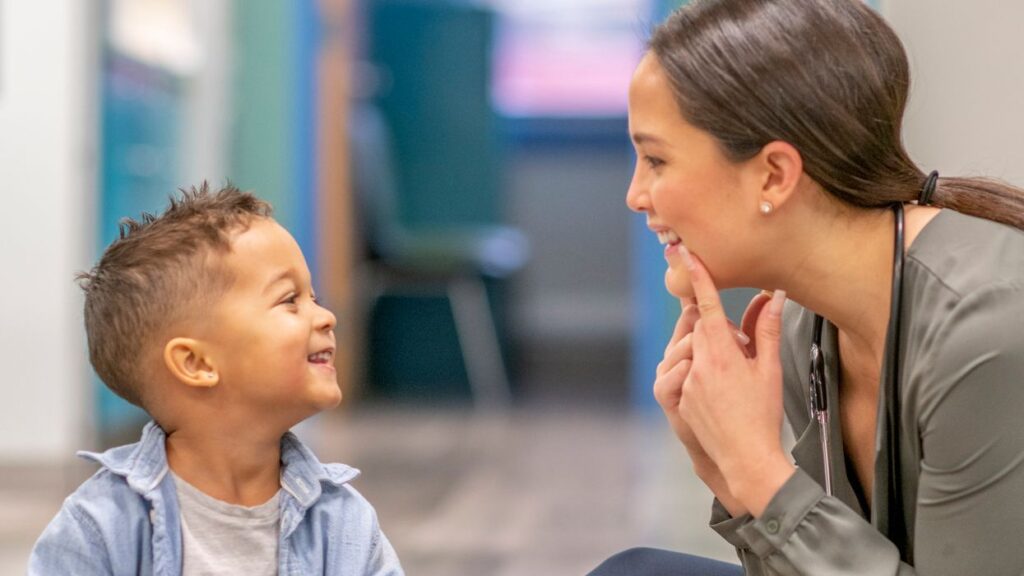Ever wondered how to make clinical information accessible and user-friendly for your clients? Psychoeducation can be an empowering clinical intervention with a wide range of benefits but only with the right planning. When considering the use of psychoeducation as part of a client’s treatment plan or group curriculum, it’s important to be mindful of tailoring this intervention to a client’s developmental age. Thinking about a client’s cognitive ability, emotional maturity and communication skills will guide you in determining what information you share and how you share it, ensuring that your client understands the material while you engage in true client-centered care.
Understanding Developmental Stages and Their Impact on Learning
Part of providing strengths-based, client-centered care is meeting our clients where they are at, and this includes where they’re at developmentally and not chronologically. Chronological age is how old someone is based on their date of birth whereas developmental age considers a person’s abilities in the areas of cognitive, social/emotional, language and physical development. Understanding the developmental age of a client is crucial when providing psychoeducation because in order for it to be effective, clients have to comprehend what we’re teaching them.
Our understanding of a person’s cognitive and emotional development will affect how we tailor psychoeducation. Identifying strengths and weaknesses within a client’s cognitive skill set—thinking, planning, reasoning, attention and memory—will help us understand how our client learns best and what strategies can be put in place to support learning. The same is true for the area of emotional development. Clients who are skilled in self-regulation are able to learn more efficiently because of their ability to focus on the information being presented and trust the person teaching them. Clients who struggle in this area tend to find focusing, remembering and processing information challenging but with the right interventions in place, are able to learn just like everyone else.
Techniques for Tailoring Psychoeducation by Age Group
Communicating clinical information based on developmental age can feel overwhelming but is a skill that can be strengthened over time and with experience. Start by clarifying the key concepts you want to present. Then, adjust your language, examples, and delivery style based on the client’s developmental age.
Young children are concrete thinkers and because of their age, have short attention spans and little ability to regulate on their own. Providing psychoeducation to this age group might feel like a challenge but can actually be fun if you present it in a playful way. For example, I provided psychoeducation on affect identification by using simple language and focusing on only the four basic emotions—happy, sad, mad, scared. Visual aids, such as pictures of children with these facial expressions, mirrors and using my own face was helpful as well. Playing games and incorporating movement in these sessions increased their ability to take in the information, ultimately leading to a basic, yet foundational, understanding of their feelings.
This foundation could be built on with school-aged children by introducing more nuanced feelings through conversation and games, such as Feelings Candyland, and pulling from their experiences at home and school. As children grow into teens and young adults, more complex language can be used and the examples used to highlight certain feelings could be more reality-based rather than the light, playful examples you would use with younger children. Keeping examples relevant is key, especially with teens and young adults, so I’d often incorporate stories they may have already shared with me about their school or work experiences or I’d use this as an opportunity to get more information about their experiences in order to connect it to what I was teaching them.
Tailoring psychoeducation is like building with blocks—start bottom up and go from there. Clients who are younger in developmental age need simple, straightforward and foundational information. As you work with people at higher developmental ages, you build on their foundational knowledge, increasing the complexity and nuance of the information you’re providing.
The Benefits of Developmentally Appropriate Psychoeducation
Developmentally appropriate psychoeducation offers clients many benefits, such as improved understanding and increased engagement during sessions, the ability to recall learned coping skills during times of heightened stress, an enhanced ability to manage challenges and an improvement in treatment outcomes.
Providing developmentally appropriate psychoeducation can also strengthen the helping relationship by offering true client-centered care. Tools like Casebook allow teams to document psychoeducation delivery clearly and consistently—supporting continuity of care and better client outcomes.


